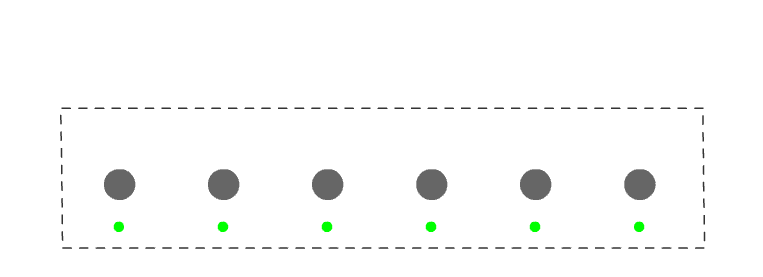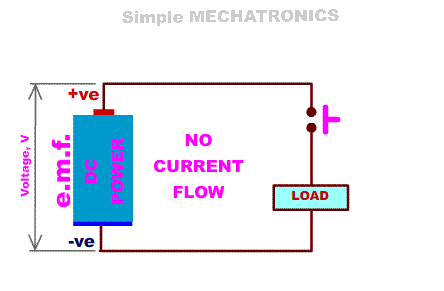
:STATIC ELECTRICITY:
Static electricity is a stationary electric charge, produced due to an imbalance between positive and negative charges in an object or two near-by objects. Generally, this charge is build up on the surface of the object. To release the charge (or discharge) on the object, an electric path has to be created between positive and negative surfaces, through a circuit or an electric conductor (eg. copper wire). Some materials that tend to gain or lose electrons easily, when comes in contact with other materials, like human hair, human skin, wool, cloth, silk, nylon, plastic sheet etc. Due to Static electricity, some times you feel mild electric shock and may feel nuisance. Static Electricity has some advantages / applications, which are used in photo-copying machines for toner transfer, air pollution control systems using electro-static discharge concept, paint sprayers etc. So, our hands (skin) may develop a mild static electricity when rubbing with glass or aluminum or silk cloth etc., which may be harmful (or damage) some sensitive ICs (Integrated Circuits). So, we should discharge static electricity from our hand before working with some ICs. We have to just touch (do not rub) to some metallic sheet to discharge Static electricity from our hand, before working on static electricity sensitive electronic components. Static electricity discharge pads are also available. The main difference between the Static Electricity and Current Electricity are, In Static Electricity, the charges are at rest and in Current Electricity, the electrons are moving. The Static Electricity may be observed on the surface of insulator, where as Current Electricity means moving of electrons inside the conductor.
Coulomb(s):
Coulomb is unit of electrical charge and its symbol is C. A quantity of 1C is equal to approximately 6.24 x 10^18 electrons (its charge). (need not worry about these definitions. This is to just have an idea only)
:CURRENT ELECTRICITY:
Have you heard riddle “Which city has electrons” Answer is ELECTRICITY. The explanation below is to easily understand the term Electricity and its relative terms. In reality, understanding electricity and flow of electricity is a vast subject. In theory, Electricity means flow of electrons from higher potential to lower potential in conductors.
You may be wondering, how electrons flow? What is conductor? . . .
Do you remember basics of Quantum Physics? For quick recap, an atom consists of Protons(positively charged), Neutrons(no charge) and Electrons(negatively charged) particles. Protons and Neutrons occupy centre of the atom called neucleus and electons revolve around it. The quanity of Protons and Electrons always matches for an atom, so, the overall charge of the atom becomes ZERO. Most of the physics and chemistry depends on the behaviour of outer-most electrons and distance from the neuclies of the atom. Same with the electricity also. The (electric) Conductors, normally have one electron in the outer-most shell and/or loosly bound to the neuclies, i.e., very less energy is required to separate the outer-most electron from the atom. As the electron is negatively charged, it gets repelled by another negatively charged particle (electron) or gets attracted to positively charged particle (proton) of another atom. If an electron is separated from an atom, as the number of protons remains same, the atom becomes positively charged by 1, which is called cat-ion. These cat-ions have attraction towards negatively charged particles, i.e., electrons again to balance the overall charge of the atom.

As per electron cloud theory, the loosely bound electrons form as electron cloud within the conductor (say metals) and move in haphazardly within the conductor.
Electro Motive Force (e.m.f.):
Coming to electricity, some (electrical) force is required to push the loosly-bound electron from the metal. As the electron moves out of the atom, it repels the loosly-bound electron of the nearest atom. The positively charged atom (cat-ion) attracts the next electron coming from the (electrical) force. This chain continues to create a flow of electrons. On the other side, the (electrical) force attracts and collects the flowing electrons. So, the (electrical) force must have positively charged elements to attract the electrons in the loop. The electrical force which makes the loop to create flow of electrons is called as Electro-Motive-Force (E.M.F.).

So, an e.m.f. is required to generate flow of electrons in the conductor, pushes free electrons (loosly-bound electrons) on one side from its negative pole and attracts the free electrons on the other side, i.e. positive pole.
In other words, electrons are negatively charged and carry their charge through the conductor, from one end to other end. So, electricity may be considered as moving the electrical charge through the conductor.
The electrical charge cannot continue, unless the continuous contact of the conductor is available from beginning of the e.m.f. to receiving end of the e.m.f. i.e., the flow of charge will be disturbed, if the connectivity from any one of the ends of e.m.f. is lost. So, the continuation (or stoppage) of electricity may be controlled by a switch, which makes or breaks the continuity of the chain.
So, e.m.f. is considered as the energy supplied to the conductor to have flow of electrons or electric charge, which is measured at end points of e.m.f. generator, like, battery, dynamo, solar cells etc.
KEYWORDS:
Potential Difference (P.D.) : Potential energy is the position possesed by electric particle due to location in an electric field. This may be compared as the position of an object on the earth w.r.t. distance from the centre of the earth, gravitational force on the object. Higher the altitutude means higher position and vice-versa. So, the difference between the potential energy of electrical particles in the circuit may be considered as Potential Difference.
Voltage : Voltage is the energy required to move unit charge from one point to another, while electric charge is flowing. Voltage is measuring unit of Potential Difference between any two points or across a passive element of the electrical charge circuit. The sum of Voltages across all the passive elements in series is equal to the e.m.f. of the circuit.
Volt(s) :
Volt is the electrical unit of voltage and its symbol is V). One Volt is defined as energy consumption of one joule per electric charge of one coulomb. i.e., 1V = 1J/C. (don't worry or confuse about the definition right now). as per OHM's law, One volt is equal to current of 1 amp flows through resistance of 1 ohm: 1V = 1A ⋅ 1Ω ( formulated as V = I . R )
Current :
The quantity of electrical charge moving between two points at any moment, due to e.m.f. is called current. The current may be considered as number of electrons flowing parallel to each other at an instant. It means, higher the electrons flowing across the conductor at a time is considered as higher current is flowing.
Ampere(s) :
Ampere is the electrical unit of Current and its symbol is A. One Ampere is defined as the current that flows with electric charge of one Coulomb per second. 1A = 1C/sec. (don't worry or confuse about the definition right now). as per OHM's law, One Ampere is equal to the current flows through resistance of 1 ohm across 1 volt: 1A = 1V / 1Ω ( formulated as I = V / R )
The fundamentals of Electricity is to be known before going through the next pages. The basics and keywords are frequently used in the future explanations. More details are available in the next pages, wherever applicable.